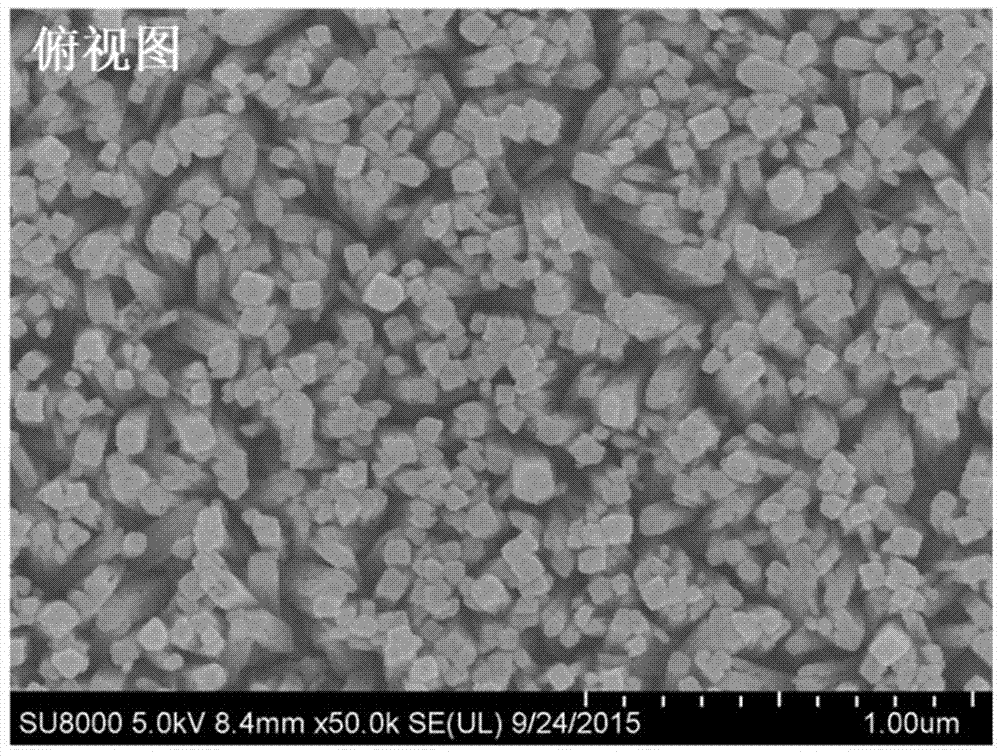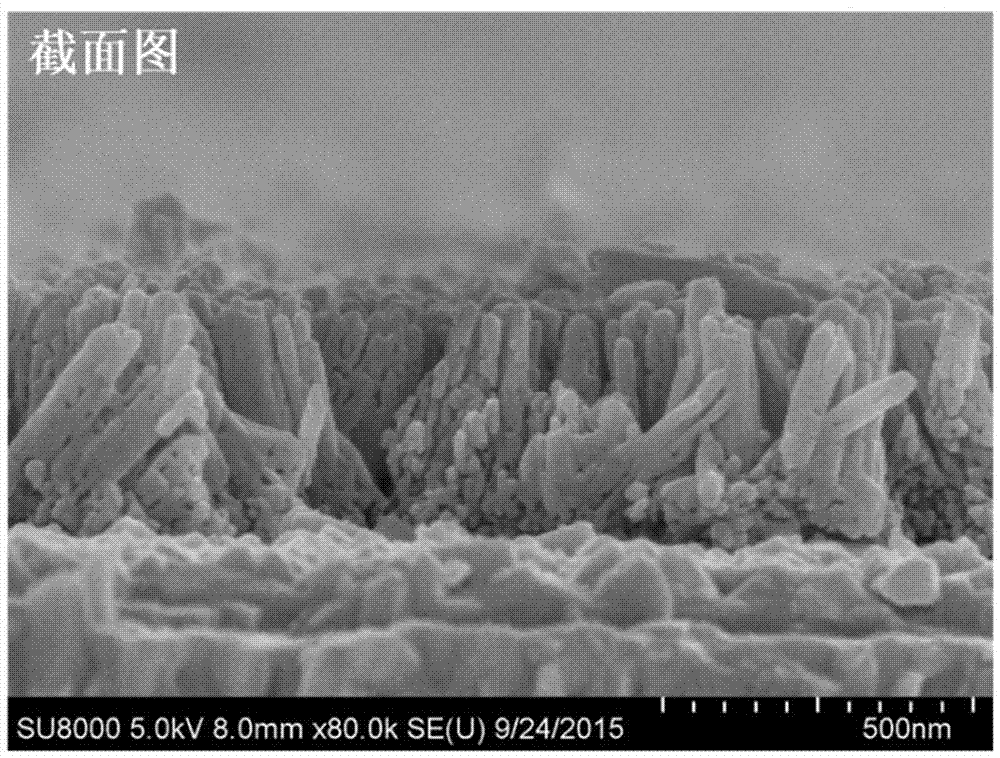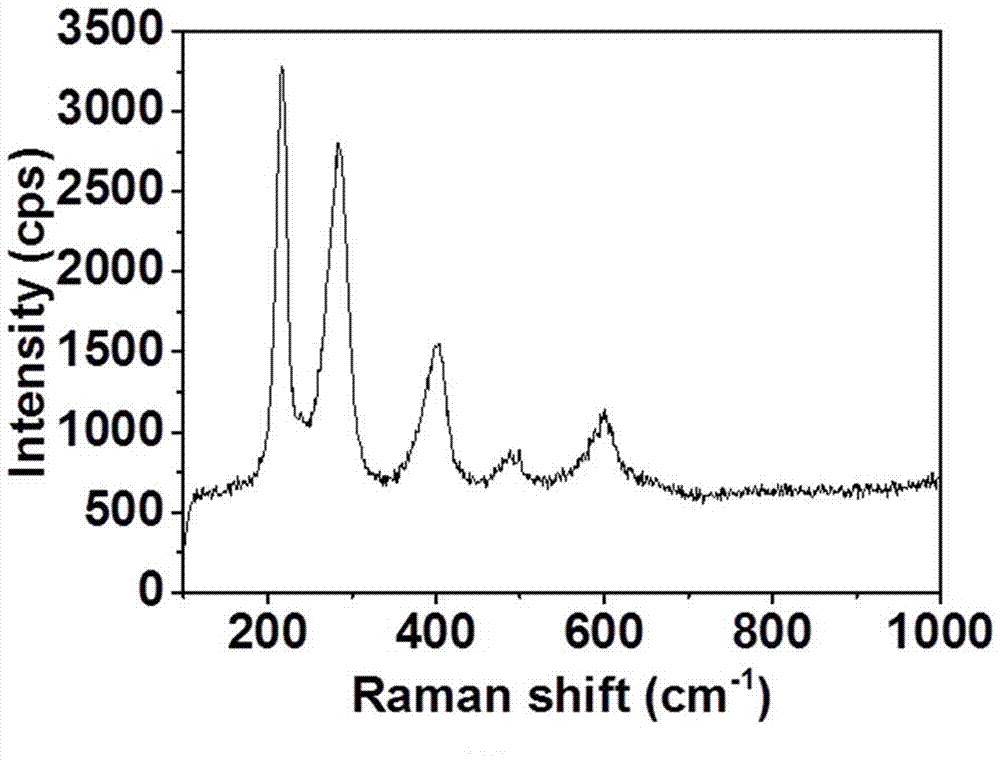Preparing method and application of alpha-Fe2O3 porous nano bar array photo-anode material
A nanorod array, photoanode technology, applied in metal material coating process, electrode, liquid chemical plating and other directions, to achieve the effect of convenient operation, shortened transmission distance and excellent performance
- Summary
- Abstract
- Description
- Claims
- Application Information
AI Technical Summary
Problems solved by technology
Method used
Image
Examples
Embodiment 1
[0030] A kind of α-Fe 2 O 3 The porous nanorod array photoanode material is prepared by in-situ liquid-curing two-step synthesis. The specific steps are: (1) Immerse FTO conductive glass with 0.1mol / L FeCl 3 And 0.1mol / L dicyandiamide / formaldehyde polycondensate aqueous solution, then adjust pH=1.5 with dilute hydrochloric acid, react at 95℃ for 6h, cool, wash and dry to prepare β-FeOOH nanorod array; (2) Place the β-FeOOH nanorod array prepared in step (1) in N 2 In the atmosphere, heat treatment at 550°C for 2h, continue heat treatment at 800°C for 0.1h, and cool naturally to obtain α-Fe 2 O 3 The porous nanorod array photoanode material, it can be seen from the actual situation that the prepared material is uniformly covered on the FTO conductive glass substrate, and it is bright red. The prepared material is used as a photoanode material for photoelectric hydrolysis to produce hydrogen.
[0031] Figure 1a with Figure 1b Is α-Fe 2 O 3 Scanning electron micrograph of porous nan...
Embodiment 2
[0038] A kind of α-Fe 2 O 3 The porous nanorod array photoanode material is prepared by in-situ liquid-curing two-step synthesis. The specific steps are: (1) Immerse FTO conductive glass with 0.05mol / L FeCl 3 In the aqueous solution, the pH is adjusted to 1.5 with dilute hydrochloric acid, reacted at 95℃ for 9 hours, cooled, washed with water, and dried to prepare the β-FeOOH nanorod array; (2) The β-FeOOH nanorod array prepared in step (1) In N 2 In the atmosphere, heat treatment at 550°C for 2h, continue heat treatment at 800°C for 0.1h, and cool naturally to obtain α-Fe 2 O 3 Nanorod array materials, the prepared materials are used as photoanode materials for photoelectric hydrolysis to produce hydrogen.
[0039] The test results show that: the prepared α-Fe 2 O 3 It is a smooth nanorod array with a band gap of 2.09eV, the photoelectric hydrolysis reaction starting potential is 0.90 V vs. RHE, and the photocurrent density at 1.23 V vs. RHE is 0.65mA / cm 2 , The photoelectric conv...
Embodiment 3
[0041] A kind of α-Fe 2 O 3 The porous nanorod array photoanode material is prepared by in-situ liquid-curing two-step synthesis. The specific steps are as follows: (1) Immerse FTO conductive glass with FeCl containing 0.15mol / L 3 And 0.05mol / L dicyandiamide / formaldehyde polycondensate aqueous solution, then adjust pH=1.5 with dilute hydrochloric acid, react at 95℃ for 12h, cool, wash, and dry to prepare β-FeOOH nanorod array; (2) Place the β-FeOOH nanorod array prepared in step (1) in N 2 In the atmosphere, heat treatment at 550°C for 2h, continue heat treatment at 800°C for 0.1h, and cool naturally to obtain α-Fe 2 O 3 Nanorod array materials, the prepared materials are used as photoanode materials for photoelectric hydrolysis to produce hydrogen.
[0042] The test results show that: the prepared α-Fe 2 O 3 It is a porous nanorod array with a band gap of 2.03eV, and its photoelectric hydrolysis reaction starting potential is 0.80 V vs. RHE, and the photocurrent density at 1.23 V ...
PUM
| Property | Measurement | Unit |
|---|---|---|
| Diameter | aaaaa | aaaaa |
| Length | aaaaa | aaaaa |
| Photocurrent density | aaaaa | aaaaa |
Abstract
Description
Claims
Application Information
 Login to View More
Login to View More - R&D
- Intellectual Property
- Life Sciences
- Materials
- Tech Scout
- Unparalleled Data Quality
- Higher Quality Content
- 60% Fewer Hallucinations
Browse by: Latest US Patents, China's latest patents, Technical Efficacy Thesaurus, Application Domain, Technology Topic, Popular Technical Reports.
© 2025 PatSnap. All rights reserved.Legal|Privacy policy|Modern Slavery Act Transparency Statement|Sitemap|About US| Contact US: help@patsnap.com



